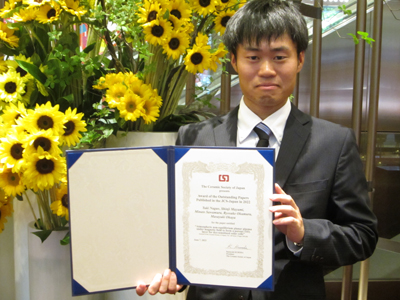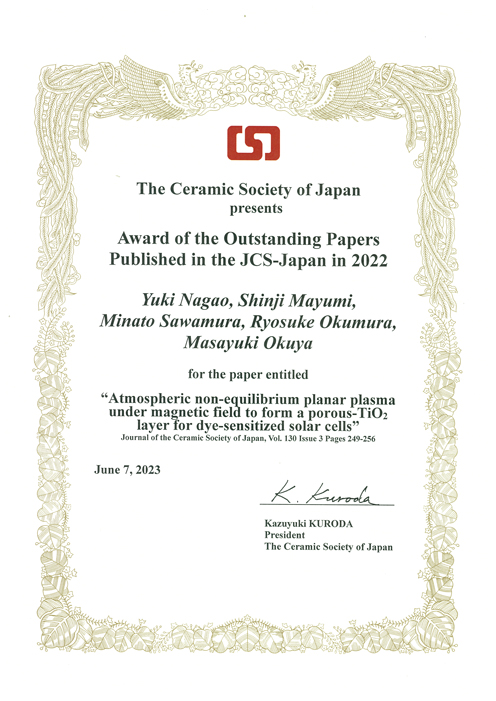|
Atmospheric non-equilibrium planar plasma under magnetic field
to form a porous-TiO2 layer for dye-sensitized solar cells |
| Yuki Nagao, Shinji Mayumi, Minato Sawamura, Ryosuke Okumura, and Masayuki Okuya |
|
Electronics and Materials Science Course, Department of Engineering, Graduate School of Integrated Science and Technology, Shizuoka University, 3-5-1 Johoku, Hamamatsu 432-8561, Japan |
|
Abstract
A porous-TiO2 layer was formed using a non-equilibrium planar plasma under atmospheric pressure. With a planar plasma, which decayed rapidly on the electrode in air, a small amount of plasma was supplied to the titanium−peroxo complex precursor pre-coated on a substrate during film formation. However, by applying a magnetic field to the plasma, the spatial distribution was expanded to reach the bulk of the precursor layer, and the oxidation process was accelerated under a nitrogen and oxygen mixture gas flow. We found that active N−O plasma species induced under a high nitrogen gas concentration played an important role in oxidizing and crystallizing the precursor to the anatase TiO2 phase. The precursor was employed as a binder to promote the necking process between the TiO2 particles to form a porous layer. A dye-sensitized solar cell (DSSC) fabricated with a porous-TiO2 layer showed a maximum conversion efficiency of 3.9%. Although the photovoltaic performance was lower than that of a general DSSC, a practical plastic substrate is acceptable in this low-temperature film formation technique, which will be developed into a convenient tool to produce a DSSC for daily use.
   Journal of the Ceramic Society of Japan, Vol. 130, pp.249-256 (2022). |
